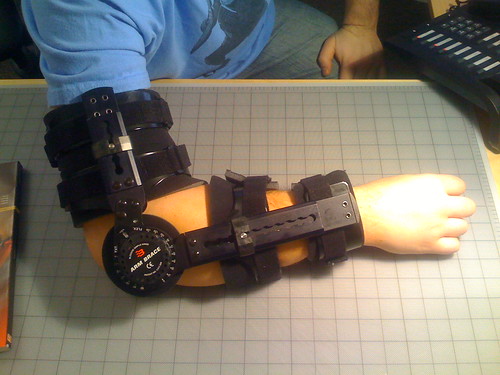I had a conversation with Dorian the other day after he posted You Don’t Get It on his personal blog. He said:
My brain doesn’t really work like everyone else’s. So when you say you “know exactly what [I’m] going through”? You don’t, really. You know the same result – a paper not getting written. But you don’t really seem to explain the process that gets me to that point in my brain. It’s frankly kind of agonizing–I want to write that paper pretty badly! You don’t get it.
People didn’t like this comment of Dorian’s. [It also went ’round Tumblr for a bit.] One commenter said:
What exactly do you want people to say when you describe something like this? That you are the only one that goes through it? I can understand the hardship that you may be going through but that doesn’t mean someone else can’t experience too.
When I responded to this, I took the analogy away from struggling to complete tasks and to something that most people will see as a “real” disability [yay, disability hierarchy!!!!].
I do not have a chronic pain condition, nor do I get migraine headaches. When I’m in pain, my joints ache. I feel tired. My muscles are sore. I want to lie down.
I take some over-the-counter drugs, or have a bath, or nap, and usually wake up with little to no pain and go about my day.
When Don talks about his experiences, he talks about being in pain. His joints ache. He’s tired. His muscles are sore. He wants to lie down.
He takes a wide assortment of drugs: two doses a day of 12-hour morphine, a daily dose of oxycodin, the associated drugs to deal with the side-effects of both of those, and a few other things lying around for “breakthrough pain”, one of which we have to sign for before we take it out of the pharmacy, and another of which our regular pharmacy doesn’t carry routinely. He’s a full-time wheelchair user so he can leave the house more than once every few weeks. He spends most of the day lying down.
We use the same words to describe our pain.
Dorian also uses the same words to describe his difficulties in completing tasks that I do. When I’m procrastinating, I’m quite happy to tell anyone who will listen (and several who will not) that I’m procrastinating and having troubles and words won’t come and make my essay/blog spot write itself now please.
But my troubles are not the same as Dorian’s, anymore than my pain is the same as Don’s.
We just use the same words.
My point isn’t that people with disabilities need to use different words or that currently non-disabled people need to use different words. It’s that words come with context. When Don says he’s in pain, he’s typically talking about his chronic pain condition. When I say I’m in pain, I’m typically talking about having sat wrong for a few hours.
Context matters.




